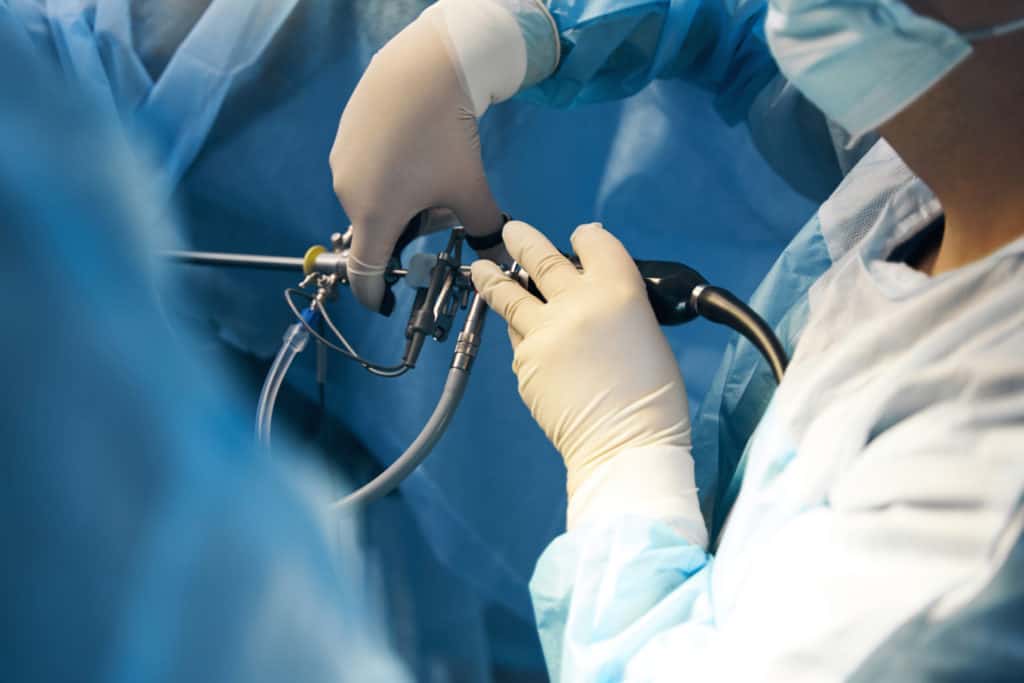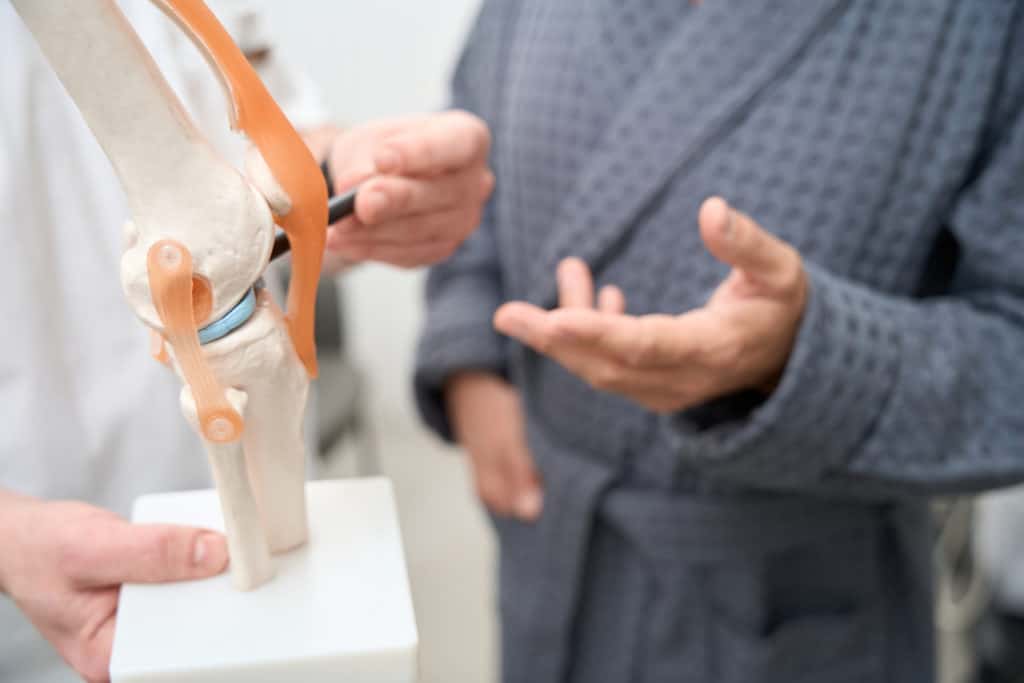
Orthopedic surgery has come a long way over the years, and medical experts and Orthopedic Surgeons are continually looking to find new, innovative ways of improving treatment. One of the most promising advances is the development of minimally invasive surgical techniques. These procedures offer numerous benefits for patients in terms of shorter hospital stays, reduced recovery times, less discomfort, and improved outcomes. This article will discuss the basics of minimally invasive surgery and explain how it can benefit orthopedic patients.
Contents
What is Minimally Invasive Surgery?
Minimally invasive surgery, when it comes to orthopedic surgery, refers to a variety of techniques where surgeons use smaller incisions than those made during traditional open surgery. Such approaches enable access to the affected area via natural openings in the body or with specialized instruments such as endoscopes. This type of surgery promises fewer risks compared to its open counterpart while also offering the potential for faster recoveries and diminished pain.

Definition and Overview of Minimally Invasive Surgery
The concept behind MIS is simple: small incisions are made near the operation site before being widened using special tools instead of making large, traditional surgical incisions. (learn more from this article form the Mayo Clinic) Depending on the particular procedure being performed, the patient may be asked to lie down flat or remain in a seated position. In many cases, the surgeon uses an imaging device coupled with a fiber-optic camera that’s inserted into the patient’s body through one of the small incisions. The images thus obtained allow the doctor to visualize internal structures, which makes it easier to plan and execute the final steps of the procedure.
How Minimally Invasive Surgery Differs from Traditional Open Orthopedic Surgery
Open surgery often requires large incisions that can initially cause more trauma to the body. During traditional operations, the muscle tissue surrounding the affected joint may have to be cut through to gain access to the underlying bones and other structures. With MIS, however, the muscles are left intact since they do not need to be disturbed. As a result, the body has much less disruption, and the healing process is generally quicker and less painful for the patient.
Advantages of Minimally Invasive Surgery
Not only does minimally invasive surgery minimize injury to the patient and speed up their return to normal activity levels, but there are also several potential benefits. For instance, because the surgery involves smaller incisions, blood loss is significantly reduced compared to traditional open surgeries. Furthermore, due to the magnified imagery gained through specialized devices, the reconstruction accuracy is often higher compared to conventional methods. Finally, MIS can often allow Orthopedic Surgeons to perform minor repairs instead of complete joint replacement – thereby preserving more of the original anatomy when possible.
Conditions Treated with Minimally Invasive Surgery
Patients seeking relief from orthopedic issues turn to MIS as a viable solution. Below, we take a closer look at some common conditions helped by these techniques.
A Few Common Conditions Helped by MIS Orthopedic Surgery
Arthritis: For people with arthritis, minimally invasive surgery can provide significant relief. By avoiding large incisions, MIS reduces the risk of infection and shortens the recovery time, enabling patients to return to their daily activities faster.
Fractures: Regarding fractures, minimally invasive techniques allow for precise alignment and stabilization of broken bones. The use of this technique leads to quicker healing and improved long-term outcomes.
Rotator Cuff Injuries: Traditional surgery for rotator cuff injuries often involves a lengthy recovery period. However, MIS enables a quicker return to normal function with less post-operative pain.
Tendonitis: For patients with tendonitis, minimally invasive surgery can help reduce inflammation and relieve pain without needing a prolonged recovery period.
Carpal Tunnel Syndrome: Carpal tunnel syndrome can be debilitating, but with minimally invasive surgery, patients can experience immediate relief from symptoms. The procedure also minimizes scarring and allows a faster return to work and daily activities.
Sports Injuries: Athletes often fear a long layoff following an injury. However, with MIS, many sports-related injuries can be treated effectively, allowing a quicker return to the game.
MIS offers a wealth of benefits for patients suffering from various orthopedic conditions. By reducing trauma, minimizing pain, and accelerating recovery times, MIS is revolutionizing the field of orthopedic surgery. Whether you’re an athlete with a sports injury or an individual suffering from arthritis, minimally invasive surgery could be the solution you’ve been looking for.
Examples of Orthopedic Procedures Using Minimally Invasive Techniques
There are numerous examples of orthopedic procedures and techniques that are done by MIS in the field of orthopedic surgery. These include arthroscopy, laparoscopic partial knee replacement, hip arthroplasty, shoulder labrum repair, total joint replacement, and ACL reconstruction.
Special Considerations for Certain Conditions
For certain conditions like knee arthritis, MIS enables your orthopedic surgeon to realign parts of the bone or restore cartilage using a scope without having to resort to full replacements. Similarly, minimally invasive surgery can assist with repairing torn ligaments or tendons with precision, as opposed to doing so through extensive open-cutting incisions.
Patient Experience During a Minimally Invasive Procedure
If you’re considering undergoing a minimally invasive procedure, it’s essential to understand what to expect along your journey. We provide an overview below.
Preparing For the Procedure
Prior to the actual operation, you may have to undergo blood tests and x-rays depending on the nature of the surgery. On the day of the procedure, arriving early will give you plenty of time to prepare. You should wear comfortable clothing, leave valuables at home, and bring a copy of the prescribed medications you’re taking with you.
The Procedure Itself – Anesthesia, Incisions, Recovery Time
Before beginning an orthopedic surgery, anesthesia will be administered to ensure your comfort throughout the procedure. Once the area is numb, the surgeon typically makes two or three tiny incisions near where they need to work. They then insert fiber optic cameras, lights, and other instruments through the incisions.
Recovery time will vary depending on the severity and complexity of the surgery; however, you should begin to feel better soon after the procedure is completed. Moreover, you won’t typically experience too much pain since MIS causes minimal disturbance to the surrounding tissues and muscles.
Aftercare Instructions Following Surgery
You’ll likely be advised to keep the incision sites clean, dry, and bandaged until the wounds heal completely. Physical therapy might be recommended as well in order to strengthen the repaired area. Additionally, you should be given specific instructions regarding activities that should be avoided during the postoperative period.
Potential Risks and Complications of Minimally Invasive Surgery
As with any form of surgery, there are always risks associated. Fortunately, there is evidence suggesting that the incidence of serious or life-threatening complications is significantly lower when involving MIS compared to traditional open surgery. Nevertheless, it’s important to be aware of the possible dangers involved in this procedure.
Identifying and Assessing Possible Risks.
MIS risk factors might include infection, bleeding, nerve damage, pulmonary embolism, heart attack, stroke, organ perforation, and allergic reactions to medications or anesthesia. Therefore, it’s important to thoroughly discuss your case with your physician before committing to the operation.
Risk Factors to Consider Before Undergoing Surgery
Your risk profile might depend on various factors, such as age, pre-existing medical conditions, lifestyle habits, existing medications, and other personal characteristics. Likewise, it’s worth understanding the possibility that some health concerns simply cannot be addressed through minimally invasive surgery. Your orthopedic doctor should be able to provide sound advice based on all factors involved in your case.
Exploring Alternatives if Minimally Invasive Surgery Isn’t Right for You
In some instances, alternatives such as physical therapy, medication, or bracing might be sufficient to address certain afflictions without surgery. It’s important to consult your doctor if none of these options seem suitable; after all, you don’t want to ignore a condition that could worsen over time.

Benefits of Choosing Minimally Invasive Surgery
Patients can enjoy numerous positive aspects when assessing the advantages of minimally invasive surgery.
Faster Recovery Times, Reduced Pain and Discomfort
One of the main perks of MIS is that patients generally don’t require lengthy hospital stays following the procedure. Additionally, MIS reduces scarring, swelling, and general pain due to the minor impact experienced by surrounding tissues, bones, and organs.
Shorter Hospital Stays and Lower Costs
Given the shorter recovery times, individuals who opt for MIS often spend fewer days in the hospital in comparison to open surgery. Besides reducing the burden on the hospital, such decisions can lead to a considerable decrease in medical costs. To add, out-of-pocket expenses for patients are typically lower when they choose MIS over regular open surgery.
Improved Outcomes and Long-term Quality of Life
Finally, the enhanced precision provided by MIS results in improved outcomes ranging from greater mobility and stability to decreased odds of needing future complicated treatments or corrective surgeries. All told, the long-term outlook for patients is exceedingly bright due to the combination of shorter recovery times, reduced traumatic impacts, and superior reconstructive results.
Overall, minimally invasive surgery carries multiple advantages compared to traditional open surgery. Not only do patients experience a smoother recovery, but pain levels are often greatly reduced as well. With fewer risks, shorter hospital stays, and better outcomes, it’s easy to see why so many people opt for this approach.
Find Relief from the leading Wyoming Orthopedics Provider
Don’t let pain or discomfort hold you back any longer. At Thunder Basin Orthopaedics, we specialize in minimally invasive surgical techniques designed to get you back on your feet as quickly and painlessly as possible. As a leading Wyoming Orthopedic clinic, we are committed to providing you with the highest quality care and the best possible outcomes. Contact us today to schedule an appointment and discuss with our Orthopedic Surgeons if minimally invasive surgery is the right solution for you. It’s time to take the first step towards a pain-free life.
Key Takeaways
- Minimally invasive surgery is a modern technique used for treating orthopedic conditions using smaller incisions
- Potential benefits include reduced pain, blood loss, and faster return to normal activity levels
- Common conditions addressed through MIS include fractures, rotator cuff injuries, tendonitis, and herniated discs
- Prepare for the procedure by getting blood tests, wearing comfortable clothes, and leaving valuables at home
- Understand the possible risks associated with MIS before choosing to pursue the operation
- Explore alternative treatments if MIS isn’t right for your particular situation

